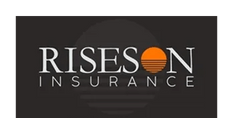
Understanding Loss Ratios: A Key Metric in Insurance
December 31, 2024 | Insurance
When evaluating an insurance company or understanding your own policy, one of the most important metrics to consider is the loss ratio. At Riseson Insurance , we’re here to help clients in Tempe , Phoenix , Scottsdale , Tucson , Gilbert , and Chandler make sense of this crucial concept and how it impacts their insurance decisions.
A loss ratio is the percentage of premiums an insurance company pays out in claims compared to the amount of premiums it collects. Essentially, it measures how effectively an insurer uses the premiums they receive from policyholders.
Loss ratios are a key indicator of an insurance company’s financial health and operational efficiency. Here’s why they matter:
Policyholder Impact: A lower loss ratio may indicate an insurer is profitable and stable but could also mean they pay out fewer claims relative to premiums. Regulatory Compliance: Insurance regulators monitor loss ratios to ensure companies aren’t overcharging customers or denying too many claims. Business Insights: For businesses purchasing insurance , understanding loss ratios can help them evaluate the reliability of an insurer.
The ideal loss ratio depends on the type of insurance:
Health Insurance : Often ranges between 80-85% due to regulations requiring insurers to spend a significant portion of premiums on claims. Property and Casualty Insurance : Typically falls between 50-70%, allowing for operational expenses and a reasonable profit margin.
Insurance companies aim to maintain a balanced loss ratio. If claims payouts rise significantly, they may need to adjust premiums for policyholders to cover the increased costs. Conversely, a consistent and efficient loss ratio can result in more stable premiums.
At Riseson Insurance , we prioritize transparency and help our clients make informed decisions. Whether you’re evaluating your current coverage or exploring new policies, understanding metrics like loss ratios can empower you to choose the right insurer. Our team serves Tempe , Phoenix , Scottsdale , Tucson , Gilbert , and Chandler , ensuring you have access to expert advice tailored to your needs.
For personalized guidance and support, contact Riseson Insurance in Tempe. Call us today at 602-460-5470, and let us help you navigate the complexities of insurance with confidence.
What Is a Loss Ratio?
Why Are Loss Ratios Important?
What Is an Ideal Loss Ratio?
How Loss Ratios Affect Your Premiums
How Riseson Insurance Can Help
Get in Touch
- Policyholder Impact: A lower loss ratio may indicate an insurer is profitable and stable but could also mean they pay out fewer claims relative to premiums.
- Regulatory Compliance: Insurance regulators monitor loss ratios to ensure companies aren’t overcharging customers or denying too many claims.
- Business Insights: For businesses purchasing insurance , understanding loss ratios can help them evaluate the reliability of an insurer.
- Health Insurance : Often ranges between 80-85% due to regulations requiring insurers to spend a significant portion of premiums on claims.
- Property and Casualty Insurance : Typically falls between 50-70%, allowing for operational expenses and a reasonable profit margin.
